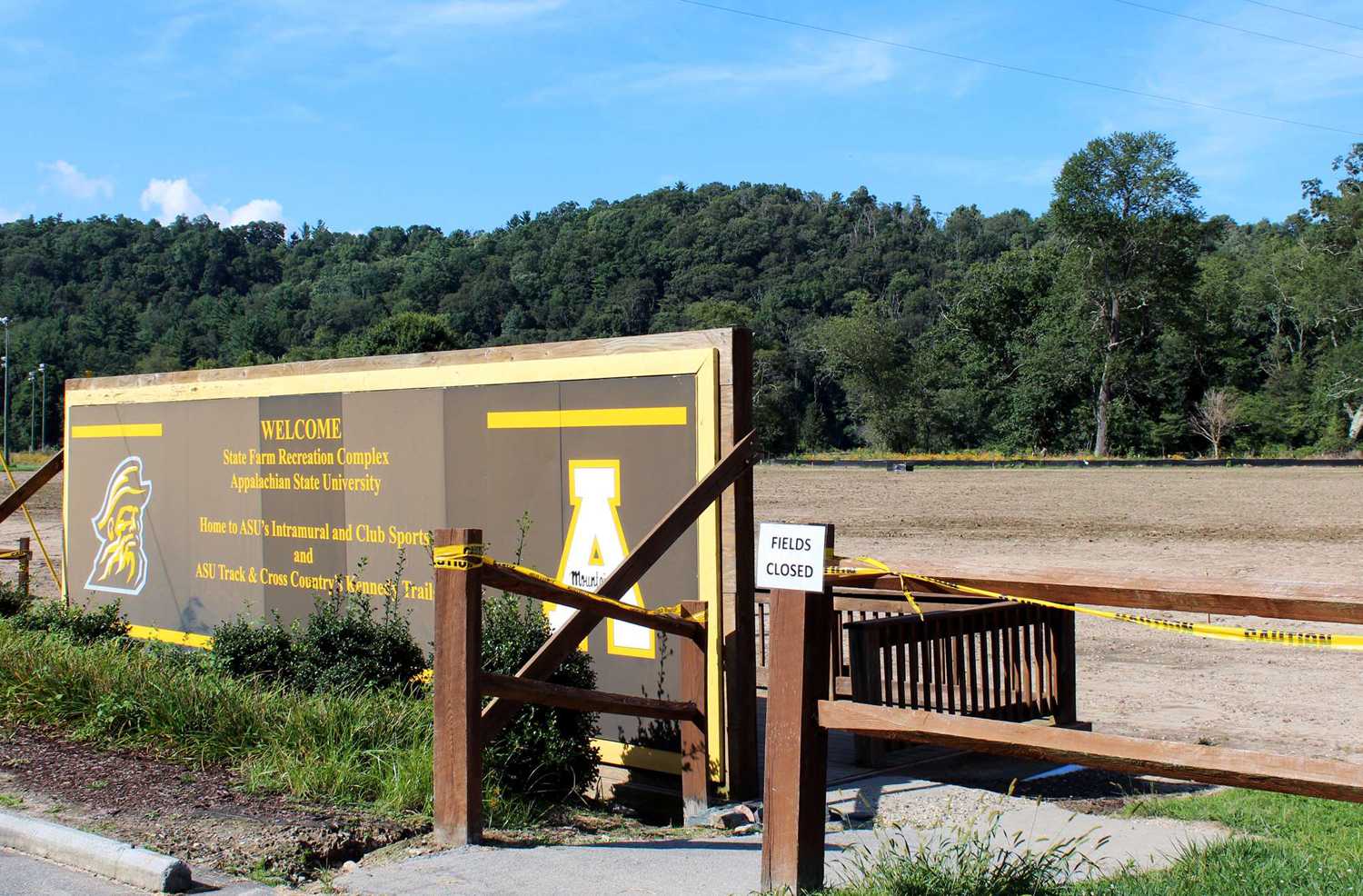State Farm Fields will undergo multiple renovations that will improve the fields for the benefit of students in the coming years.
State Farm Fields, once a farm that was used primarily for dairy and feeding the students of Appalachian State, now serves as athletic fields for students who participate in intramural and club sports offered through University Recreation.
Director of University Recreation Joe Carter said that Club teams, such as men and women’s Rugby, men’s and women’s Lacrosse,and men’s and women’s Soccer, will not be affected by these renovations since they will be using the already renovated lower fields and game fields on the northern side of the river.
According to Carter, the fields lie within a floodway, so no other buildings or factories can be built within the floodway. He said the first of the two projects is the Stream Bank Renovation project.
This project includes intentional rock placement in the stream, folding the river banks back to help with erosion, planting of native plants, wetlands enhancement, relocating sections of the Greenway Trail, and the overall improvement of water quality for the stream.
The project is funded by the U.S. Army Corps of Engineers, Clean Water Committee, Town of Boone and Appalachian State. The first project is estimated to be completed by early October.
The second project is the Field Project. Carter said the approval of the Stream Bank project provided an opportunity for a partnership to move forward and make use of the materials from Stream Bank project.
Next week the university will begin underground trenching for new lights.
“We would get about two foot of candlelight from our old light posts,” Director of University Recreation Joe Carter said. “Very inadequate.”
Carter said that in the early 2000s, the fields on the northern side of the river were renovated to allow better drainage from rain water. The field was primarily used for holding club sport’s games and matches.
“I came down the first night of games and I realized ‘Hey, we don’t even have Porta-Johns down here,” Carter said. Soon after this restroom facilities were built for student use.
Carter said the upper field will undergo similar renovations that will allow better drainage of standing rainwater, better lighting, and six acres used for club and intramural sports
According to him, the estimated time for completion of these renovations is Sept. 7, 2015, however, there will be a 16-18 month period of non-scheduling on the field to allow for the grass to take root. The university will be using Kentucky Blue Grass for this operation. This is a similar grass that acts and feels almost like turf.
“We live in an area that requires cool weather grass, not the Bermuda grass one might see in the state of Georgia or South Carolina,” Carter said. “We will put a temporary construction fence to loop around the outside of the field keep people off the sprinkler lines as well as eliminate wear-paths.”
Carter said that Club teams, such as men and women’s Rugby, men’s and women’s Lacrosse,and men’s and women’s Soccer, will not be affected by these renovations since they will be using the already renovated lower fields and game fields on the northern side of the river.
Assistant Director for Intramural and Club Sports Erin Sanders said that no club sports will be entirely canceled due to the improvements to the fields. Club sports that use the fields will be shifted to new locations and adapted while the upper fields are closed.
Carter said that due to limited space and the inability to acquire alternate fields, intramural sports will offer alternative sports such as five-versus-five basketball and indoor soccer to replace sports such as soccer and flag football.
The current field renovations are projected to cost around $700,000, Carter said, and will primarily be paid for by general student tuition. This budget was approved by the Assistant Vice Chancellor of Financing and Operations Matthew Dull.
“This project is long overdue and once completed students will see fewer cancellations due to wet fields,” Carter said.
Story by Samuel Ingles, Intern News Reporter

